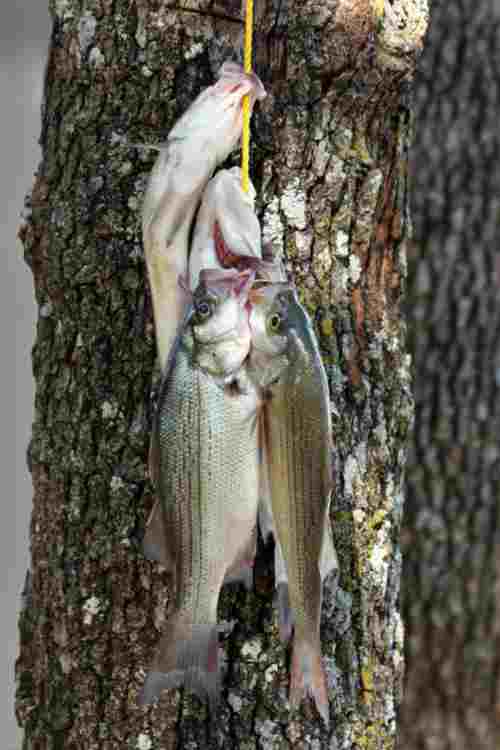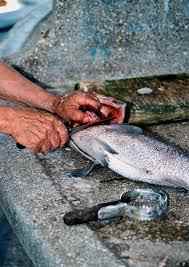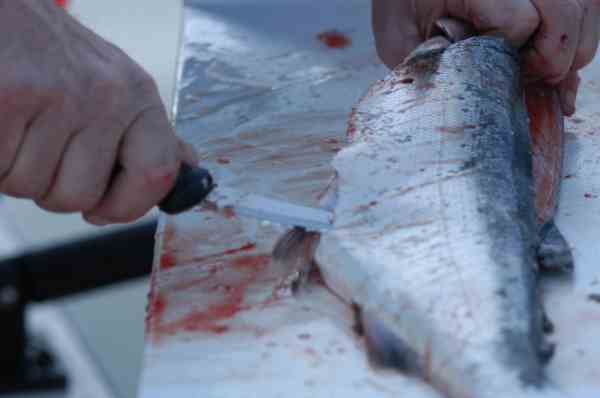How To Clean A Fish

There are numerous ways to prepare a fish for cooking. First we will cover the simplest most basic method. It isn't a method that most fisherman use, but it is the simplest and least wasteful.
The first step is to cut the fish from is anus up to the head. This opens up the body cavity so that the guts can be removed. Pulling out all of the guts from a fish is extremely easy and leaves a nice clean pocket in the fish. Removing the head is optional. If food is really scarce you should opt to leave the head on and not let a single sliver of fish go to waste. You might also like to leave the head intact as it can serve as a skewer point for a stick to aid in cooking.

Cook and enjoy. The fish can be cooked in a pan or on a hot rock or suspended near a fire by skewering it on a stick.
Filleting a fish is today's preferred method of cleaning your catch. This method requires a sharp knife. Filleting a fish can be done after gutting or without gutting the fish at all. Today fisherman rarely gut their catch if they plan on filleting the fish.
 Filleting when done properly leaves you with two pieces of fish meat for every fish you have to clean. The fillet should either be free of bones or nearly free of bones. This is what makes it so popular.
Filleting when done properly leaves you with two pieces of fish meat for every fish you have to clean. The fillet should either be free of bones or nearly free of bones. This is what makes it so popular.
Once you have reached the tail you have two options. One is to cut through and you have the fillet with meat exposed on one side and the skin and scales still connected on the other side. This allows for you to cook the fish with the scale side down on a grill or wood plank and then use the skin side as a plate.
 The more often used method today is to not cut all the way through at the tail and instead flip the still attached fillet over so that the skin side is down. Then cut the meat free from the skin by running the knife back towards the head. The skin and scales of most fish are harder to cut through than the flesh so this fillet process can be done with minimal waste.
The more often used method today is to not cut all the way through at the tail and instead flip the still attached fillet over so that the skin side is down. Then cut the meat free from the skin by running the knife back towards the head. The skin and scales of most fish are harder to cut through than the flesh so this fillet process can be done with minimal waste.
Cutting away the belly of the fillet wastes some meat but can leave you with a bone free fillet. I wouldn't do this unless food is not in short supply.
